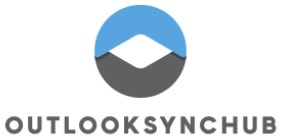In the realm of digital communication and professional networking, the importance of seamless data portability cannot be overstated. Much like the flow of water adapting to the landscape, the need for our contacts to effortlessly traverse different platforms is crucial in today’s interconnected world. Converting Outlook contacts to VCF (vCard) files emerges as a pivotal solution, akin to channeling water through a versatile conduit. VCF, the industry-standard format for electronic business cards, serves as the universal language that allows contact information to be easily shared across diverse email clients, devices, and operating systems. This fluid transition from Outlook to VCF ensures that vital contact details remain fluid and adaptable, effortlessly navigating the intricate terrain of digital communication.
Background on Outlook Contacts and VCF Format
Microsoft Outlook is a widely used personal information manager that includes a robust feature for managing contacts. Outlook Contacts stores a variety of information, including names, email addresses, phone numbers, and other relevant details. While Outlook is efficient in managing this information within its ecosystem, the need for data portability arises when users want to transfer their contacts to other applications or platforms.
The Virtual Contact File (VCF) format comes into play as a standardized solution for interoperability. VCF, also known as vCard, is a widely adopted file format that encapsulates contact information in a universally readable form. It serves as a bridge between different contact management systems, allowing users to share and migrate their contact data seamlessly.
The importance of this conversion lies in the versatility of the VCF format, which can be imported into various applications, email clients, and devices without compatibility issues. Whether users are transitioning to a new email service, updating their CRM system, or simply sharing contact information, converting Outlook Contacts to VCF ensures that data remains accessible and usable across diverse platforms. Understanding the background of Outlook Contacts and the role of the VCF format lays the foundation for addressing the challenges and exploring effective conversion methods.
Challenges in Converting Outlook Contacts to VCF
While the idea of converting Outlook Contacts to the VCF format is appealing for enhanced data portability, several challenges present themselves in the conversion process. These challenges stem from the proprietary nature of Outlook’s data format and the inherent differences between how Outlook organizes contact information and how the VCF format structures data.
- Proprietary Data Format: Outlook utilizes a proprietary data format to store contact information. This proprietary nature can make it challenging to extract data in a universally compatible way. As a result, when attempting to convert Outlook Contacts to VCF, users often encounter hurdles in ensuring a seamless transition.
- Varied Field Mapping: Outlook and VCF may have variations in the way they map contact fields. For instance, the way email addresses, phone numbers, or addresses are structured may differ. This variance can lead to information loss or misalignment during the conversion process, affecting the accuracy and completeness of the transferred data.
- Complex Data Structures: Outlook Contacts often contain intricate data structures, including custom fields and notes. Converting this complexity to the standardized VCF format requires careful handling to avoid losing vital details or compromising the integrity of the contact information.
- Bulk Data Processing: For users with extensive contact lists, converting data manually can be time-consuming and error-prone. Automating the conversion process for large datasets introduces the challenge of selecting suitable tools or methods that can efficiently handle bulk data without sacrificing accuracy.
Addressing these challenges is pivotal to ensuring a successful and error-free conversion from Outlook Contacts to VCF. Various methods, tools, and best practices must be considered to overcome these obstacles and guarantee the seamless transfer of contact information across platforms.
Methods for Converting Outlook Contacts to VCF
Efficiently converting Outlook Contacts to the VCF format requires careful consideration of available methods, each with its own characteristics. Here are three prominent methods:
- Manual Export in Outloo: Outlook’s built-in feature for exporting individual or multiple contacts to VCF format. Simple and accessible within the Outlook interface. However, it becomes impractical for large contact lists, and there might be limitations in preserving all contact details accurately.
- Third-Party Tools: Various third-party tools specialize in converting Outlook Contacts to VCF. These tools offer features such as batch processing, customizable field mapping, and error handling. Efficient for bulk conversions, customizable options, and often user-friendly interfaces. However, users must choose tools from reputable sources to ensure data integrity.
- Scripting and Programming: For users with programming skills, scripting solutions can be developed to automate the conversion process, offering a high level of customization. Highly customizable and suitable for specific requirements. However, it is not user-friendly for those without programming expertise, and may require additional time and effort to set up.
Choosing the most suitable method depends on factors such as the size of the contact list, user expertise, and the level of customization required. It’s crucial to evaluate these methods based on individual needs to ensure a smooth and accurate conversion process.
| Method | Pros | Cons |
| Manual Export in Outlook | – Simple and built-in.
– Accessible. |
– Impractical for large datasets.
– Limited customization. |
| Third-Party Tools | – Efficient for bulk conversions.
– Customizable options. |
– Dependence on external tools.
– Potential cost. – Quality varies among tools. |
| Scripting and Programming | – Highly customizable.
– Specific requirements can be met. |
– Not user-friendly for non-programmers.
– Time-consuming setup. |
Best Practices for Data Portability
Ensuring a smooth and reliable conversion process from Outlook Contacts to the VCF format involves adhering to best practices. One fundamental practice is the establishment of regular backups before initiating any conversion procedure. This precautionary step is critical as it safeguards the original data, providing a fallback in case unexpected issues arise during the conversion, preserving the integrity of the contact information.
Another essential best practice is the implementation of standardized field mapping. Defining a consistent and standardized mapping between Outlook Contacts and VCF is crucial. This practice helps ensure that all relevant information is accurately transferred during the conversion process. By having a clear and standardized mapping, the risk of data loss or misinterpretation of contact details is minimized, contributing to a more reliable and precise transfer of data between the two formats.
These best practices collectively contribute to a robust approach to data portability, allowing users to confidently convert their Outlook Contacts to VCF while maintaining the accuracy and completeness of their contact information. Regular backups and standardized field mapping form the cornerstone of a reliable conversion process, promoting a seamless transition between different contact management systems.
Security and Privacy Considerations
Security and privacy considerations are paramount when undertaking the conversion of Outlook Contacts to the VCF format. Contact information typically contains sensitive data, and ensuring its safeguarding throughout the conversion process is critical. The selection of tools plays a significant role; opting for reliable third-party tools that adhere to robust data protection standards is imperative. These tools should implement encryption protocols to secure contact information, preventing unauthorized access during the conversion process. Encryption serves as a crucial measure to fortify the privacy of the data being transferred.
User authentication and access controls should be implemented as part of the security measures. Restricting access to individuals with the appropriate permissions mitigates the risk of data breaches. By enforcing stringent access controls, organizations and users can ensure that only authorized personnel can handle sensitive contact information. Additionally, compliance with data protection regulations is crucial. Understanding and adhering to regulations such as GDPR, HIPAA, or other applicable standards are vital steps in maintaining trust and avoiding legal repercussions
In summary, a proactive approach to security and privacy considerations is fundamental during the conversion of Outlook Contacts to VCF. Through careful tool selection, encryption implementation, user authentication, access controls, and regulatory compliance, users can confidently transfer their contact information while prioritizing the confidentiality and integrity of sensitive data.

